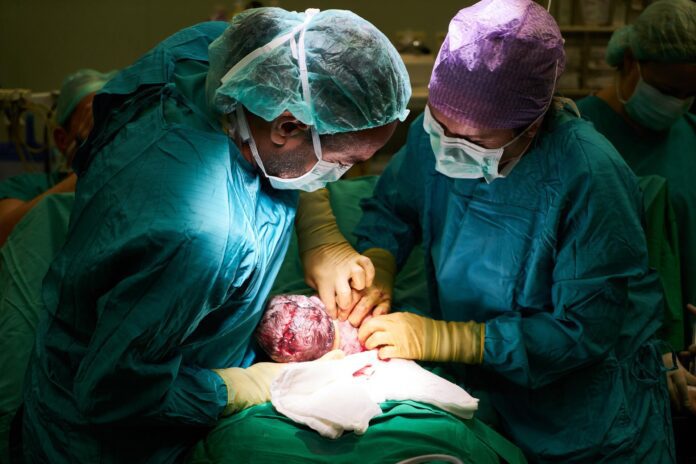A C-Section (otherwise known as a Caesarean section or delivery) describes a surgical procedure in which a baby is delivered through an incision in the mother’s abdomen (usually because a vaginal delivery would put both mother’s and the child’s health at risk).
Currently, C-Sections account for around 100,000 of the 700,000 births that occur every year in the UK, although we’ve recently seen a significant rise in the number of unnecessary C-Sections on these shores.
We’ll explore this further below, while appraising the associated risks with Caesarean deliveries and why they should only be carried out when absolutely necessary.
The Rise of Unnecessary C-Sections
According to the World Health Organisation (WHO), C-Section use continual to rise globally and on an annual basis, with this delivery method now accounting for more than one-fifth (21%) of all births throughout the world.
Estimates suggest that this number will continue to increase incrementally between now and 2030 too, before peaking at a staggering 29% overall.
But what’s behind this trend? Well, it should be noted that precise percentages vary from one country to another, but as a general rule, global C-Section rates have increased from just 7% in 1990. This is largely due to increased access, as developing nations have seen their healthcare provisions improve markedly over time.
However, increased access has also created a scenario where C-Sections are favoured by mothers, who can opt for an ‘elective’ Caesarean delivery. This means that C-Section can be performed without an underlying medical need, contributing dramatically to the number of unnecessary procedures in the process.
Of course, increased access doesn’t always translate into a higher standard of care, so performing more C-Sections may result in a higher number of issues and complications.
The Health Risks Associated with C-Sections
In instances where C-Sections are recommended, it’s thought that its potential risks are overshadowed by those associated with vaginal births.
This isn’t the case with unnecessary C-Sections, however, where parents and children incur risks without any of the benefits. For example, C-Sections are associated with longer recovery and an increased risk of complications, while the threat of maternal death and disability is also markedly higher.
Also, it’s common for a woman’s bowels to get lacerated inadvertently during the procedure, increasing the risk of a subsequent infection. The child can also be cut, creating a risk that everyone would want to avoid.
If you do have a recommended or elective C-Section and incur subsequent injuries, you may want to consider pursuing a medical negligence claim. This may only be possible if the procedure is recommended, as you’ll usually have to sign some type of disclaimer when opting for an elective procedure.
Your claim will also have to be made within three years, so we’d recommend consulting with no win no fee medical negligence solicitors to ensure the validity of your case as soon as possible after the event or any symptoms becoming apparent. You’ll also have to demonstrate a link between the C-Section and your subsequent injuries, but your legal representatives will be able to help in this respect.
Help keep news FREE for our readers
Supporting your local community newspaper/online news outlet is crucial now more than ever. If you believe in independent journalism, then consider making a valuable contribution by making a one-time or monthly donation. We operate in rural areas where providing unbiased news can be challenging. Read More About Supporting The West Wales Chronicle























